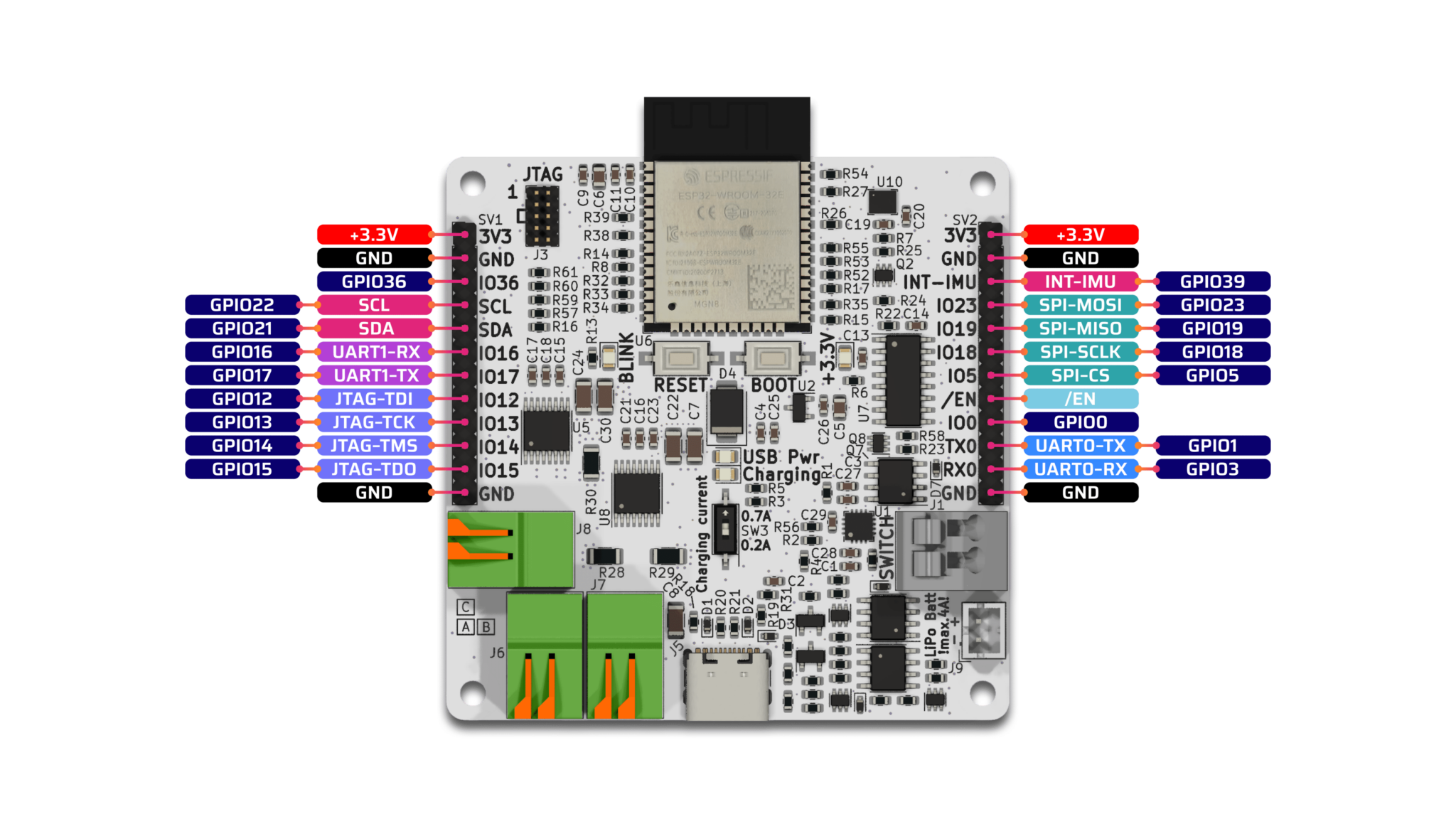I2C bus
Quote from admin on August 15, 2024, 1:50 pm
On the pinout, you can see the SCL and SDA pins, which are the pins for the I2C bus (Inter-Integrated Circuit). The I2C bus enables communication between the RoboHeart Hercules and various peripheral devices such as sensors and displays. The bus has internal pull-up resistors. You can communicate with the built-in IMU on the RoboHeart via this bus. The I2C address of the IMU is 0x6A.
Internally on the RoboHeart the SCL and SDA pins are connected to the following GPIOs of the ESP32:
SCL - GPIO 22
SDA - GPIO21

On the pinout, you can see the SCL and SDA pins, which are the pins for the I2C bus (Inter-Integrated Circuit). The I2C bus enables communication between the RoboHeart Hercules and various peripheral devices such as sensors and displays. The bus has internal pull-up resistors. You can communicate with the built-in IMU on the RoboHeart via this bus. The I2C address of the IMU is 0x6A.
Internally on the RoboHeart the SCL and SDA pins are connected to the following GPIOs of the ESP32:
SCL - GPIO 22
SDA - GPIO21
CONTACT
Augmented Robotics GmbH Bismarckstraße 10 – 12 10625 Berlin Germany
+49 (0)30 590-083296

This project is co-financed by the European Regional Development Fund [ERDF]
